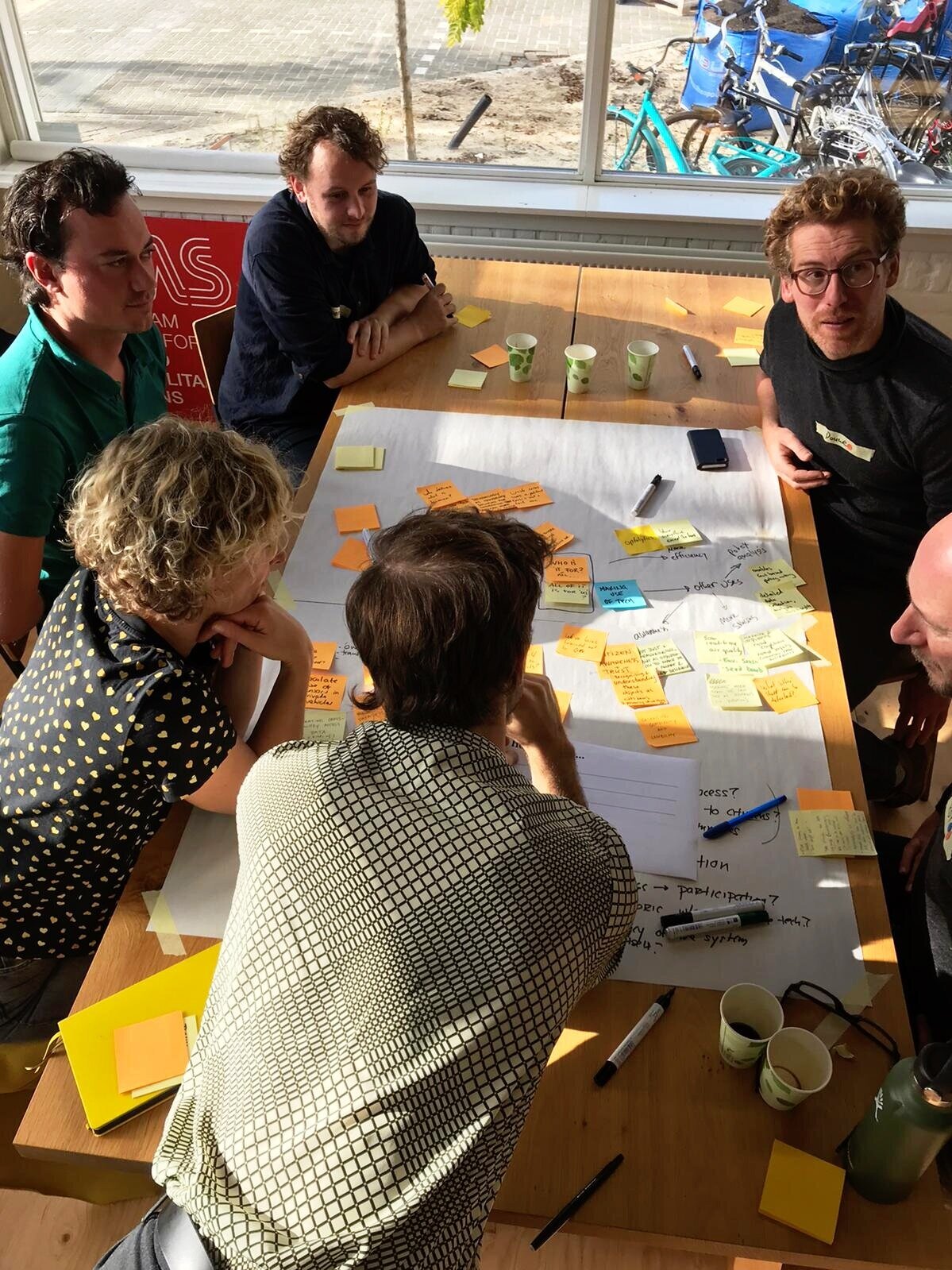Redesigning the Scan Car
Designing transparent alternatives
As Amsterdam and Rotterdam are digitising their civic processes, they’re introducing ‘scan cars’: cars with sensors, that scan license plates to check whether cars have paid for their parking, and that look for litter in the streets. Whilst these sensor technologies can bring benefits, like cleaner streets and reduction in fraud, they are often overly focused on efficiency and ‘seamlessness’. The cars and accompanied sensors are not designed to communicate their function, so it is difficult to understand what is going on, and have agency in interactions with the cars. Together with the AMS Institute, UNSense designed four possible scenarios to make scan cars more legible, transparent, relatable, contestable and actionable.


Legibility and transparency
A new design of the scan car, shows which sensors the car is carrying. Green light illustrates whether they are turned on or off. The placing of the sensors also communicates their function and reach. The new design offers insight into the scanning algorithm, by showing what it sees and what it remembers.
In the case of vehicle-mounted object recognition cameras, used to identify trash on the street, the algorithm disposes of any image data, leaving behind only the metadata of what the algorithm has recognised. To communicate this process, we place a QR code on the car, directing people – after scanning back – to a live stream of footage. The stream shows how images are used, how it is recognising and processing objects, and what is deleted afterwards.

Relatability and actionability
As all scan cars currently look the same, it is hard to tell how many there are. Is it just the same one, roaming my neighbourhood on a daily basis? Or is there a whole anonymous army? Also, as of current policy, the drivers of the cars are merely the drivers – and not allowed to engage in conversations. How can we make the scan cars more relatable, and find safe ways to facilitate
interaction?
We propose to diversify the aesthetics of the different cars, or give each scan car a unique name. Through a phone number displayed on the car’s exterior, citizens can initiate text-based conversations, to ask about the car’s function, it’s sensors and data. Most answers could be provided by a bot, or by voice-directed messages from the driver. The vehicle could double as a source for hyper-local information, utilising its geo-location and new chat function to alert residents to things such as road closures to new restaurant openings.




Where, when Amsterdam, 2019
While working for UNSense
Team Connor Cook, Tessa Steenkamp, Thijs Turel, Marije Wassenaar
Collaborators Amsterdam Institute for Metropolitan Solutions (AMS), Gemeente Amsterdam, Gemeente Rotterdam, Tada Manifesto, TU Delft
Links
https://www.ams-institute.org/news/how-could-technology-make-scan-cars-more-human/
http://unsense.com/solution/humanizing-the-scan-car/